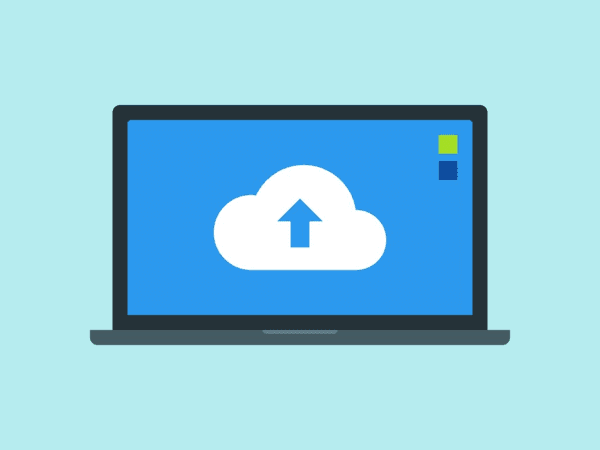
Things Artificial Intelligence Cannot Do
September 24, 2019
Cybersecurity Risk Assessments
September 26, 2019Gone are the days when data are saved into discs and drives. Today, with the advancement of technology, data are already saved in the cloud. Cloud storage is a more convenient and cost-effective way of storing data which helps user backup, sync, and access his files wherever he is as long as he is connected to the internet.
What Is Cloud Storage?
Cloud storage is simply a service model where data are remotely saved, managed, and backed up and is made readily available to the user as long as he is connected to the internet. Typically, users have to pay for space that they use monthly. It allows individuals or companies to store their files in third-party data centers through a cloud provider.
Here is a quick video for cloud storage:
Types of Clouds
Generally speaking, there are three types of cloud solutions – public cloud, private cloud, and hybrid cloud. Each of these clouds has its own sets of advantages and disadvantages. Take a further look at the types of cloud.
Public Cloud
A public cloud is a type of computing service that security and accessibility at the same time. This type of cloud is available on the internet to anyone who wants to use it and is offered by third-party providers for free or sold on demand.
Sold on demand means that users only pay for the storage, CPU cycles, or bandwidth that they have used. This type of security is ideal for files in folders that are under the unstructured data category.

Credit: TechnologyAdvice
Private Cloud
Private Cloud is a type of service which is only offered to selected users or is only dedicated to one business which gives the user the ability to configure and manage it by their computing needs. It provides extensive and different computer resources virtually.
This type of service is more expensive than the public cloud since it is the owner who manages and maintains the physical hardware.
Hybrid Cloud
In simple terms, a hybrid cloud is a combination of a public and private cloud. It allows data and applications to be shared between the two platforms. It is more flexible option workloads move between cloud solutions the costs and needs fluctuate. It gives users more control over their data.
It is the perfect place for businesses that have a lot of files. They can save sensitive files on the private cloud and save the not raw files on the public cloud. This type of cloud offers customization and affordability at the same time.
Steps to Ensure Better Security of the Data in the Cloud
With the increasing popularity of cloud storage, security issues became a hot topic. Every single file that is saved into the cloud is under enhanced protection through different ways which include the following:
Encryption
Any data that is saved in the cloud is encrypted. This means that opening or cracking your data that is saved in the cloud is almost impossible as the intruder needs to crack it before he could access the file. Each of the information that you enter into the system is protected with an encryption key. It is either you or the data provider who has access to the key. No more, no less.
Advanced Firewalls
An advanced firewall refers to the security device of a particular network that inspects every incoming and outgoing data packets to figure out if a data passes the security measures or not. It blocks any unauthorized access to files that are saved into the cloud. Unlike simple firewalls, and advanced firewall can verify the integrity of the packet content.
Intrusion Detection System
Intrusion Detection System or IDS monitors any suspicious activity in the system and gives an alarm when such things happen.
An Intrusion Detection System can either be Network intrusion detection systems (NIDS) or Host-based intrusion detection systems (HIDS). NIDS is the one responsible for analyzing incoming network traffic while HIDS is the one that monitors the important files in the operating system
Event Logging
Basically, event logging is a “logbook” which is monitored and analyzed to increase the security of the network. It can capture many forms of information ranging from account lockouts, login sessions, failed login attempts, and the list goes on.

Credit: Network Computing
With event logging, the network actions are recorded, and security analysts are given the assistance that they need to understand the threats in the network. The recorded data are used as the basis to help security analysts predict and prevent a possible security breach.
Internal Firewalls
An internal firewall is a type of firewall which is maximized by two same or different organizations that use the same network. It makes sense that all accounts in your system have open access to everything you have on the cloud.
Setting limitations to what the users or account holders can access increased the security level of the network. With this, even compromised accounts cannot gain full access to all data in the cloud.
Physical Security
Cloud data centers are one of the most secure places. They have different security measures which include fingerprint locks, around the clock monitoring, and armed guards. Cloud data centers have a higher level of security compared with onsite data centers.
Another related video:
Final Thoughts
There is no such thing as perfect in as much as no system is entirely safe. There will always be holes. Cloud computing is nearly 100 percent secure, but users should still exert extra effort to make sure that everything is under control.
In fact, security breaches rarely occur in the cloud. And according to research, most of the security breaches that happened in the last few years is not relates to cloud storage but are internal data breaches.
Using the cloud doesn’t just offer heightened security, but it provides a lot of benefits too. You can reap these benefits, which include agility, flexibility, reduced maintenance, and infrastructure cost, a more competitive environment, less hassle, and so much more.
Are you ready to maximize what the cloud has to offer you?

